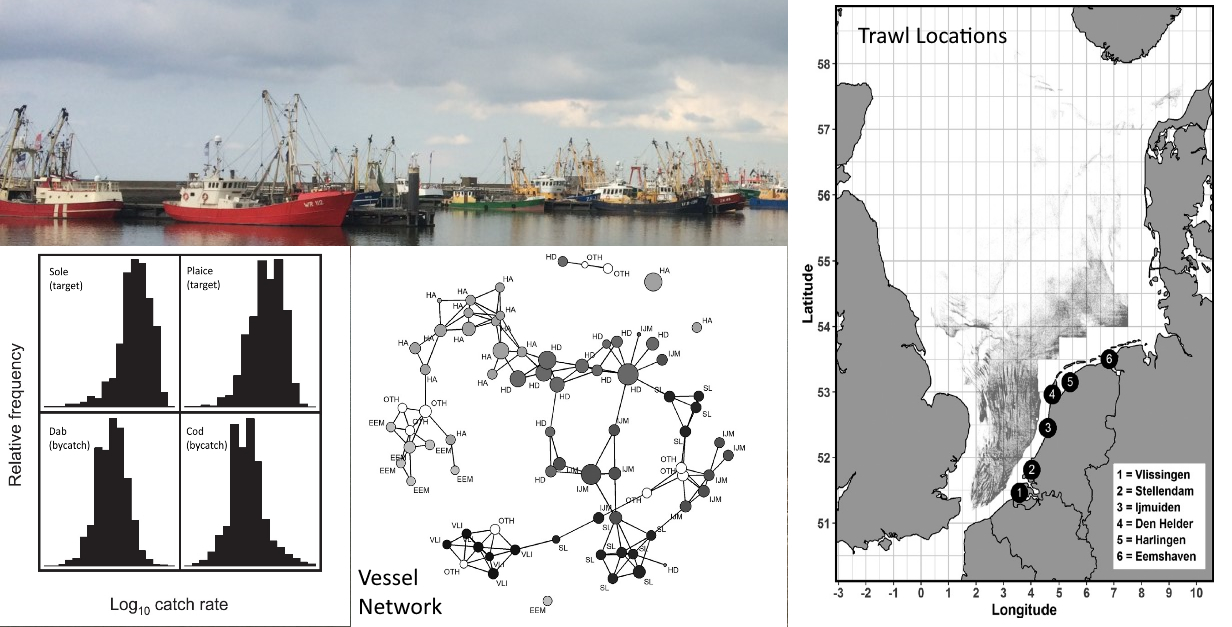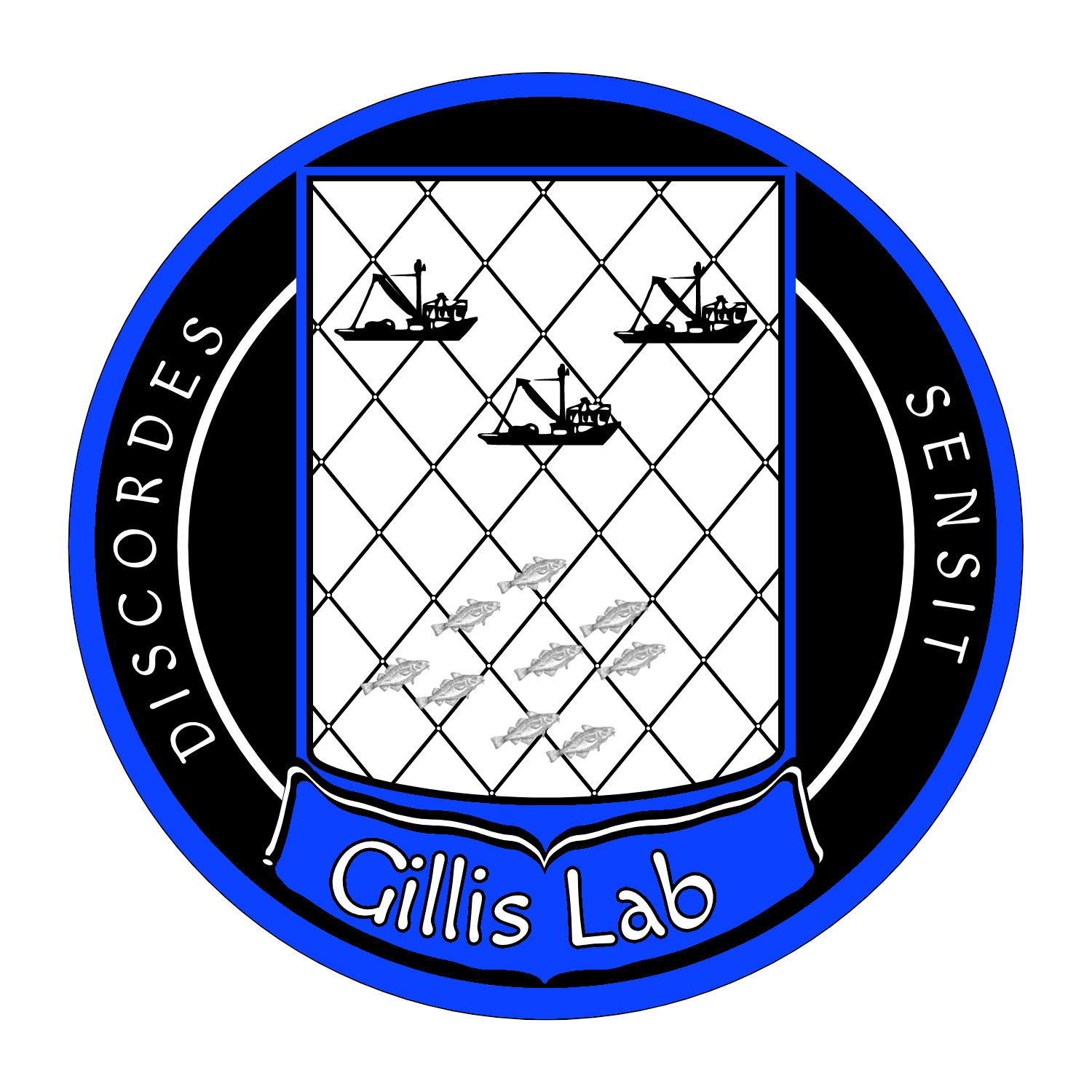North Sea

Dutch Offshore Beam Trawling
We have examined fleet dynamics in the Dutch Beam trawl fleet through collaborations with researchers at Wageningen Marine Research (WMR). This fishery chiefly targets Sole (Solea solea) and Plaice (Pleuronectes platessa) but lands many other species as either bycatch or occasional targets. Our work established that the distribution of quantities caught is biased in target species and could be used as a diagnostic (Gillis, Rijnsdorp and Poos 2008).
Targeting suggests the potential for discarding at sea. The role of catch quotas on highgrading and over-quota discarding was examined using dynamic-state variable models (stocastic dynamic programming) (Poos, Bogaards, Quirijns, Gillis, Rijnsdorp 2010). Comparisons to data from the fishery illustrated the method’s predictive potential and utility to management and conservation.
Subsequent work, illustrated in the image above, established the presence of vessel networks in this fleet based upon trawl locations. These networks revealed vessel associations on the water changed in response to performance, species caught, and homeport. The relationship between performance and network structure indicates that vessel associations should be considered in catch standardizations (Gillis, Rijnsdorp and Poos 2021).
